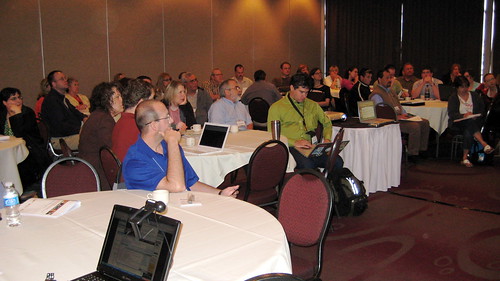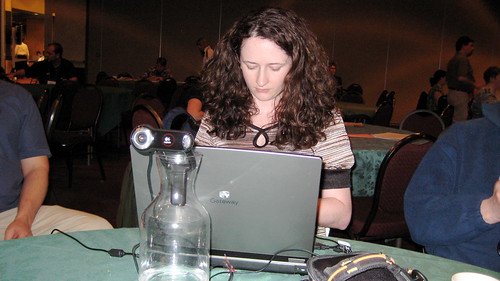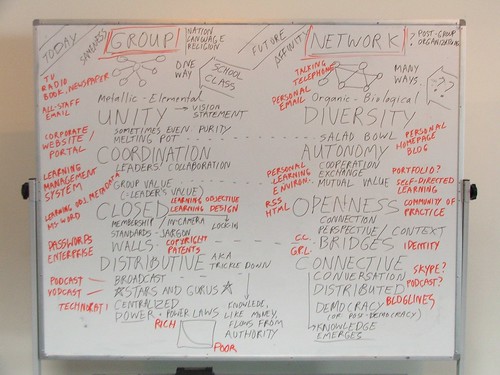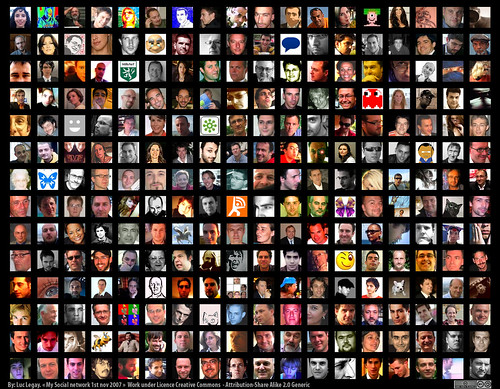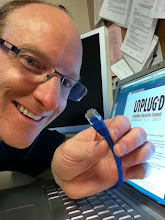You can lead a teacher to PD, but you cannot make him think. How do you whet someone's appetite for professional learning related to the use of present day technologies?
In engaging teachers to use new and evolving tools, educational technology leaders need to provide 'salty chips' in order to get them to 'drink in' the technology. How will educators be engaged in learning new skills, when they can more easily 'always do, what they've always done'?

If educators are provided with reliable access to salty chips, they are going to want to continue to drink. My opinion is that the best way to engage teachers in using technology, is to provide ongoing access to efficient, available, 'always on' technology.
Chalkboard 2.0: Examples of Salty Chips!
The Interactive Whiteboard: A great many educators that have been provided with a
SmartBoard or
Mimio, have forced themselves to make use of it. For many, there is no turning back to traditional chalk.
The Data Projector: With most classrooms or departments sharing access to too few projectors, portable technology is not as effectively integrated as are permanently mounted machines.
This is the one purchase I would make for myself if my board, parent group, or school couldn't provide ongoing access.The Notebook Computer: If educators had ready and available access to their lessons, bookmarks, and applications (both at home and at school), then the tools above would be leveraged more regularly and more effectively.
Differentiated Access to the Internet: If educators can get to sites they want to get to, without having to jump through hoops for approval, they are far more likely to engage students in the use of a wide range of
alternatives to chalk.
Access to Engaging Software: In Ontario, we are lucky that a partnership among educators, vendors and the provincial ministry of education, called
OSAPAC, endeavors to provide access to the best software available. In addition to these tools, some tech support teams need to be more supportive of teachers requesting access to networking tools, Web 2.0 applications, and niche software.
Chalkboard 2.0 is only one part of the solution!Any of the above tools comprise but a fraction of what school boards can do to engage educators. Each of these new chalkboard tools can serve as a rich medium for interactive exploration, BUT, without adequate time to learn and practice using these tools; and without modern examples of how to use these tools to engage in authentic, collaborative learning experiences, we'll be no further ahead.
Up next: What goes well with salty chips?
Photo Credit: Maiylah
 Just this evening I started reading Iacocca’s “Where Have All the Leaders Gone?”. In the opening chapter, Lee highlights the need for leaders who have what he calls the 'Nine C’s of Leadership':
Just this evening I started reading Iacocca’s “Where Have All the Leaders Gone?”. In the opening chapter, Lee highlights the need for leaders who have what he calls the 'Nine C’s of Leadership':








